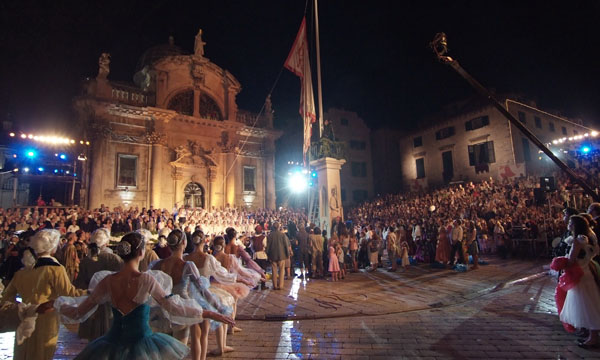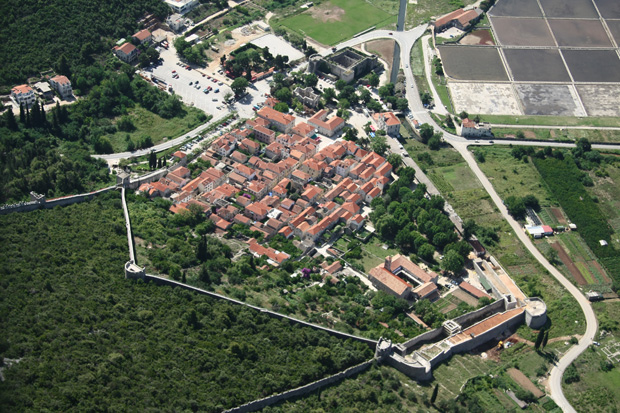This post is also available in: Croatian
CULTURAL TOURISM OF DALMATIA
 Šibenik, Foto: Tz grada Šibenika
Šibenik, Foto: Tz grada Šibenika
Dalmatian region abounds with exceptional cultural heritage, for years hidden in the rubble, or with the lack of promotion for tourists, but more recently the fact that we live in cities under UNESCO protection is increasingly appreciated. Other than just sightseeing “of stone blocks”, more and more we offer various manifestations of returning to the past, restoring of customs and presenting Mediterranean as it once was.
When you have so many cities under UNESCO protection on such a small area, royal and ancient towns, then you can only say – what a beauty! Reliefs that history wrote on the face of Dalmatia cannot be found anywhere else in the world.
If we start from the end part of Dalmatia – South, we will immediately begin the story about world’s pearl, the city of irreplaceable beauty-Dubrovnik! Doge’s Palace, the central town square of Stradun, churches and monasteries from all ages, Dubrovnik Summer Festival, Libertas film festival, lectures on inventions of a skilled scientist Ruđer Bošković, and the feast of the city patron – St. Blaise…there are so much reasons why you should include Dubrovnik in your travel itinerary.

Dubrovnik, Foto: Tz Grada Dubrovnika
The journey continues towards the north, so we come to the peninsula of Pelješac, characterized by nice salt pans, and on the southern slopes by vineyards. The result is a quality wine, with a global pedigree. You can climb and see the little Great Wall of China, as residents fondly call the fortress which protected them from the Turks.
We continue our walk along the last delta in Europe, the Neretva Delta, where you have to visit Narona, an ancient city and the former trade center, which is proud of the only museum in the country to be constructed on the ruins of the city, with many preserved monuments and statues of the time.
The following are the pearls of Croatian tourism – Makarska Riviera, where you will be astonished by the beauty of sandy beaches framed by pine trees, but you also have the opportunity to practice religious tourism through the sanctuary in Vepric.

Narona, Foto Tz grada Metkovića
Richness of the natural environment provided by the Adriatic coast, is very much visible in the pirate city of Omiš, where mountain blocks leaned over the mouth of the river Cetina making a combination of beauty and supremacy of nature that are nevertheless at all times tamed by human hand.
Split will instantly win you over, with its Diocletian’s Palace which is older than 1700 years. The bell tower of St. Duje, the Church of St. Francis, the Prokurative Town Square, are bound together by a new Riva like in a lacework, crowned by the Marjan Hill on the west. It is a city under UNESCO protection, and near its very center there is Bačvice beach that for the past decade flutters the Blue Flag.
At the very exit of the Diocletian’s city you will be greeted by Salona, the Greek-Illyrian settlement which grew over the years and was also a bishop’s residence. And over this ancient city there is a Klis fortress, a monument to brave days of the struggle against the Turks.
Drive to the west takes you through Trogir, another stone town under UNESCO protection. The more fact that these are on the list of World Heritage Sites, is enough invitation.
Šibenik has stories of its own. It will welcome you by its rampart and St. Nicholas Church. It will thrill you with its narrow streets, churches from all periods, and you will be able to participate in the Festival of the Child, an event that brings together children from around the world for nearly half a century.
Zadar is at the very end of our journey. Church of St. Donatus is a “dot to the i,” of one history, while organ of Zadar, which makes sound in the rhythm of sea currents, is associated to the modern era.
Unfortunately, this is not enough space to describe the remarkable beauty created by nature, history, and diligent hands of Dalmatians.
This post is also available in: Croatian







